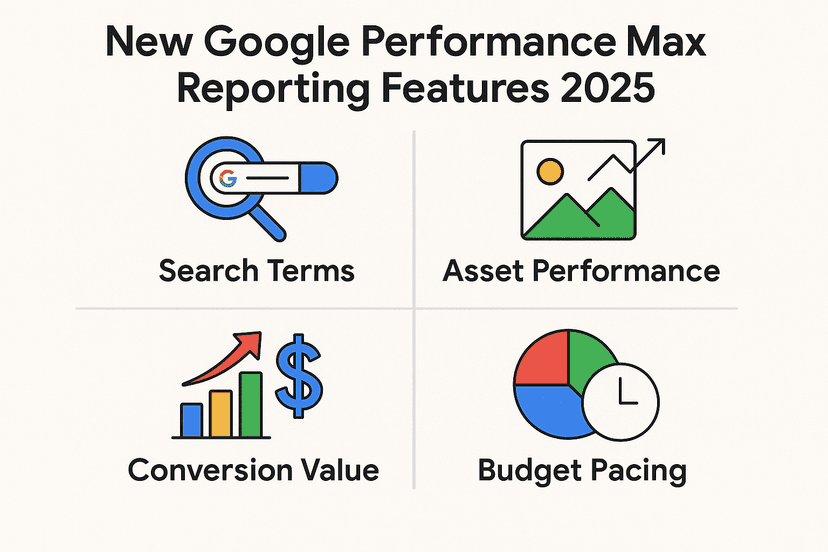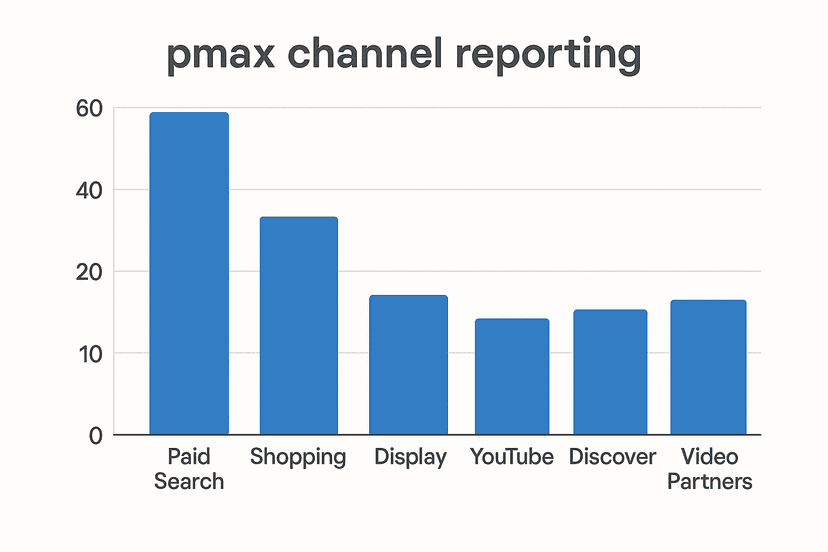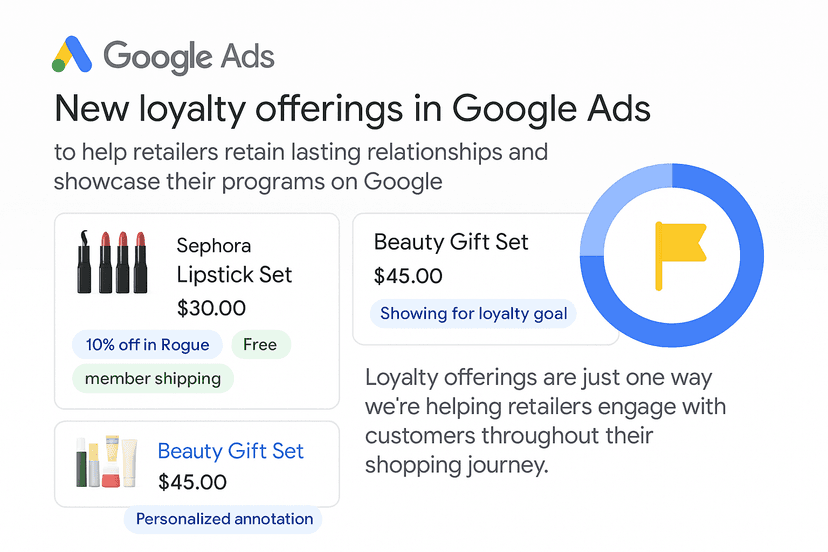Introduction
After years of advertiser demands, Google has quietly introduced one of the most requested features in digital advertising: detailed reporting for the Search Partner Network. This significant update, rolled out in August 2025, marks a fundamental shift in how advertisers can monitor and optimize their campaigns beyond Google’s owned properties.
For decades, the Search Partner Network operated as something of a black box. Advertisers could opt their campaigns in or out, but they had virtually no visibility into where their ads actually appeared or how they performed on individual partner sites. This lack of transparency led many advertisers to avoid the network entirely, potentially missing out on valuable traffic and conversions.
The new Google Ads capability changes this dynamic completely. Advertisers now have access to site-level data that shows exactly where their ads are running within the partner network. This transparency addresses long-standing concerns about brand safety, ad placement quality, and return on investment that have plagued the network since its inception.
Understanding Google’s Search Partner Network
The Search Partner Network consists of thousands of websites and mobile apps that partner with Google to display search ads. These partners include major sites like Amazon, Target, and The Home Depot, as well as smaller specialized platforms and mobile applications. When users search on these partner sites, they may see ads from Google advertisers who have opted into the network.
Historically, this network has been both an opportunity and a challenge for advertisers. On the positive side, it extends the reach of search campaigns beyond Google’s own search engine, potentially capturing users at different stages of the buying journey. Partner sites often have engaged audiences already browsing for products or services, which can lead to valuable conversions.
However, the lack of visibility created significant concerns. Advertisers worried about their ads appearing on low-quality sites or in contexts that might damage their brand reputation. Without knowing where ads were running, it became impossible to make informed decisions about bid adjustments, budget allocation, or exclusions.
This uncertainty led to a common pattern in the industry. Conservative advertisers would opt out of the network entirely, preferring the certainty of Google’s owned properties even if it meant limiting their reach. Others would opt in but set lower bids or budgets for partner network traffic, essentially treating it as a secondary channel without much strategic consideration.
What Changed with the August 2025 Update
The August 2025 update fundamentally transforms how advertisers can interact with the Search Partner Network. Google now provides site-level reporting that shows which specific partner sites served ads and how many impressions each site generated. This applies across Search campaigns, Shopping campaigns, and App campaigns.
The reporting structure mirrors what advertisers already see in Performance Max campaigns, where placement-level data has been available for some time. This consistency across campaign types makes it easier for advertisers to develop unified strategies for managing partner placements.
Interestingly, Google did not announce this update through their usual channels. Instead, it appeared quietly in the Help Center documentation, and industry professionals discovered it organically. This low-key rollout suggests Google may have been testing the feature with select advertisers before making it broadly available.
The timing of this update is particularly noteworthy because it follows several other moves Google has made to address partner network quality concerns. Earlier in 2025, Google introduced brand safety pre-screening options through partnerships with companies like IAS, DoubleVerify, and Zefr. They also announced that parked domains would be opted out by default before the end of 2025.
The Technical Details of the New Reporting
The new Google Ads reporting provides impression-level data broken down by individual partner sites. Advertisers can now see exactly how many impressions their ads received on each partner property, giving them the foundation they need to make data-driven decisions about network participation.
The reporting appears within the standard Google Ads interface, making it easily accessible without requiring additional tools or complex data exports. This integration ensures that the information fits naturally into existing campaign management workflows.
However, it is important to note that the current reporting focuses primarily on impression data. While this provides valuable visibility into ad placement, it does not include the full range of performance metrics that advertisers might want, such as click-through rates or conversion data at the partner site level.
This limitation means advertisers will need to combine the new placement data with their existing conversion tracking and analytics tools to get a complete picture of partner network performance. They can identify which sites are receiving impressions and then cross-reference this information with their conversion data to determine which placements are driving valuable results.
The reporting also includes historical data, allowing advertisers to analyze partner network performance over time. This retrospective view can help identify trends and patterns that might inform future campaign strategies.
Industry Reactions and Expert Opinions
The advertising industry has responded to this update with a mixture of enthusiasm and cautious optimism. Many professionals have praised Google for finally addressing a long-standing pain point, while others remain skeptical about the limitations of the current implementation.
Anthony Higman, who first brought widespread attention to the update, expressed his surprise at seeing this feature become reality. His reaction reflects the sentiment of many advertisers who had requested this type of visibility for years without seeing meaningful progress.
Industry experts have noted that while the update represents significant progress, it still falls short of providing complete transparency. The focus on impression data alone means advertisers must do additional work to understand the quality and value of partner network traffic.
Some professionals have drawn comparisons to Performance Max reporting, noting that impression-only data provides a starting point but requires additional analysis to be truly actionable. This perspective highlights the ongoing tension between advertiser demands for transparency and Google’s tendency to provide limited visibility into their automated systems.
The measured response from the industry also reflects years of experience with partner network quality issues. Many advertisers have developed skepticism about partner traffic based on previous experiences with low-quality placements or poor conversion rates.
Why This Matters for Your Campaigns
The availability of site-level reporting fundamentally changes the risk-reward calculation for Search Partner Network participation. Previously, opting into the network required a leap of faith, with advertisers essentially trusting Google’s algorithms to place their ads appropriately without any way to verify or optimize placements.
Now, advertisers can make informed decisions based on actual data about where their ads appear. This visibility enables several important capabilities that were previously impossible.
First, advertisers can conduct brand safety audits of their placements. By reviewing the list of sites where their ads appear, they can identify any placements that might conflict with their brand values or target audience expectations. This is particularly important for advertisers in sensitive industries or those with strict brand guidelines.
Second, the reporting enables performance optimization at a more granular level. While the current reporting focuses on impressions, advertisers can combine this placement data with their conversion tracking to identify which partner sites drive valuable results and which ones primarily generate low-quality traffic.
Third, advertisers can now have more strategic conversations about budget allocation between Google’s owned properties and the partner network. With actual placement data, they can make informed decisions about how much of their search budget should be allocated to partner network traffic.
Practical Steps to Implement the New Reporting
To make the most of the new Google Ads reporting, advertisers should develop a systematic approach to analyzing and acting on the available data. This process should begin with a comprehensive audit of current placements.
Start by pulling reports for all campaigns that have Search Partner Network enabled. Review the list of sites where your ads have appeared and categorize them based on relevance to your business and alignment with your brand guidelines. Look for any obvious red flags, such as sites that seem completely unrelated to your industry or that might pose brand safety concerns.
Next, cross-reference the impression data with your conversion tracking to identify patterns in partner network performance. While you cannot see conversion data at the partner site level directly in Google Ads, you can use tools like Google Analytics or your other tracking systems to understand how partner network traffic behaves compared to traffic from Google’s owned properties.
Pay particular attention to conversion quality metrics, not just conversion volume. Partner network traffic might generate clicks and even conversions, but if those conversions have lower lifetime value or higher return rates, they might not be worth the investment.
Consider implementing a gradual testing approach for campaigns that are not currently opted into the partner network. With the new reporting available, you can now test partner network participation with better guardrails and more informed oversight.
Develop exclusion lists based on your findings. If you identify partner sites that consistently deliver poor performance or do not align with your brand, add them to your placement exclusions. This allows you to participate in the network while avoiding specific problematic placements.
Limitations and Considerations
While the new reporting represents significant progress, advertisers should understand its current limitations to set appropriate expectations and develop realistic strategies.
The most significant limitation is the focus on impression data alone. This provides visibility into ad placement but does not include the performance metrics that advertisers typically use to evaluate campaign effectiveness. Clicks, click-through rates, conversions, and cost-per-acquisition data at the partner site level would provide a more complete picture of network performance.
Additionally, the reporting may not capture all nuances of partner site quality. A site might generate impressions and even conversions but still provide a poor user experience or attract low-intent traffic. Advertisers need to use their own qualitative judgment in addition to the quantitative data provided by Google.
The timing of data availability is another consideration. Like most Google Ads reporting, partner network data may have some delay, which could impact real-time optimization efforts. Advertisers should factor this lag into their campaign management processes.
There are also questions about the completeness of the reporting. It is unclear whether Google reports on all partner placements or if some smaller partners might be grouped together or excluded from the reporting altogether.
Strategic Implications for Campaign Management
The introduction of site-level reporting has several strategic implications for how advertisers should approach search campaign management. These changes affect not just partner network participation decisions but broader campaign strategy and optimization approaches.
First, the new visibility enables more sophisticated bidding strategies. Advertisers can now identify high-performing partner sites and potentially adjust bids specifically for partner network traffic based on observed performance patterns. This granular control was previously impossible without placement-level data.
Second, the reporting affects how advertisers should think about campaign structure and segmentation. Some advertisers might choose to create separate campaigns specifically for partner network traffic, allowing for more targeted bid management and budget allocation. Others might prefer to keep integrated campaigns but use the placement data to inform their optimization decisions.
The availability of partner site data also impacts how advertisers should evaluate the performance of Google’s Smart Bidding algorithms. These automated bidding systems are designed to optimize performance across all placements, including partner sites. With better visibility into where ads run, advertisers can more effectively assess whether Smart Bidding is making appropriate optimization decisions.
Finally, the new reporting changes the competitive landscape to some degree. Advertisers who actively use the placement data to optimize their partner network participation may gain advantages over competitors who continue to treat the network as a black box or avoid it entirely.
Conclusion
Google’s introduction of site-level Google Ads reporting represents a significant milestone in digital advertising transparency. After years of advertiser requests, this update finally provides the visibility needed to make informed decisions about partner network participation.
The new reporting addresses fundamental concerns about ad placement quality and brand safety that have long deterred advertisers from fully embracing the Search Partner Network. While the current implementation focuses on impression data and has certain limitations, it provides a solid foundation for more strategic campaign management.
For advertisers, this update creates both opportunities and responsibilities. The opportunity lies in the ability to extend search campaign reach while maintaining better control over ad placement. The responsibility involves actively using the available data to optimize performance and ensure brand alignment.
The industry reaction has been largely positive, though tempered by recognition that this is just the beginning of what could be a more comprehensive transparency initiative. As Google continues to face pressure for greater advertiser control and visibility, we may see further enhancements to partner network reporting in the future.
Ultimately, the success of this update will depend on how actively advertisers use the new data to improve their campaigns. Those who take advantage of the enhanced visibility and develop systematic approaches to partner network optimization are likely to see the greatest benefits from this long-awaited feature.
More info: https://support.google.com/google-ads/answer/16286960?hl=en




